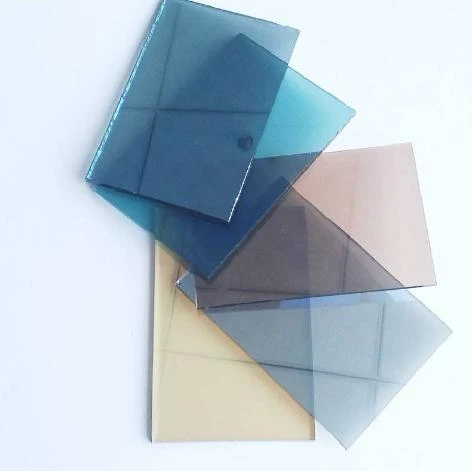Monolithic Annealed Glass An Overview
Monolithic annealed glass, a staple in various architectural and industrial applications, has become increasingly significant in recent years due to its unique properties and versatility. This glass type is produced through a specific process that involves heating and gradually cooling to relieve internal stresses, making it an optimal choice for a range of uses from windows to facades.
Understanding Monolithic Annealed Glass
Monolithic glass is a single layer of glass, as opposed to laminated or insulated glass units, which contain multiple layers or gas-filled spaces between them. The annealing process entails heating the glass to a temperature that allows it to soften and alter its molecular structure. Once it reaches the desired temperature, it is gradually cooled in a controlled manner. This process reduces internal stresses, which can lead to more predictable performance under various conditions.
The tempering process, in contrast, strengthens the glass further, but also increases production costs and limits design flexibility. Monolithic annealed glass, on the other hand, is more economical, making it appealing for large projects where cost management is critical, such as in residential buildings and commercial spaces.
Applications of Monolithic Annealed Glass
Monolithic annealed glass is extensively used in the construction industry. Its transparency allows natural light to penetrate spaces, enhancing both aesthetic appeal and energy efficiency. Architects and designers favor this glass type for facades, storefronts, and curtain walls, where large expanses of glass are desirable.
In residential settings, it is commonly utilized for windows, sliding doors, and shower enclosures. The simplicity and clarity of monolithic annealed glass make it a preferred option for homeowners seeking unobstructed views and a seamless integration with the outdoors.
Moreover, its usage extends beyond architecture. Monolithic annealed glass can be found in various applications such as glass tablets, screens, and other display technologies. Its ease of processing allows for diverse shapes and sizes, catering to modern design requirements.
monolithic annealed glass
Advantages of Monolithic Annealed Glass
One of the most significant advantages of monolithic annealed glass is its cost-effectiveness. Compared to tempered or laminated options, it's generally more affordable and widely available, making it suitable for budget-conscious projects without compromising quality.
Additionally, its clarity and optical transparency are unmatched, providing superior light transmission. This characteristic not only beautifies any space but also contributes to energy savings by reducing reliance on artificial lighting during the day.
Monolithic annealed glass is also relatively easy to fabricate and install. Unlike more complex glass systems, it can be cut, drilled, and modified with comparative ease, facilitating quicker project timelines and reduced labor costs. This adaptability allows for customization in design, meeting specific architectural requirements without extensive additional manufacturing processes.
Challenges and Considerations
Despite its numerous benefits, monolithic annealed glass does have some limitations. Its lower resistance to impact and thermal stress compared to tempered glass means it may not be suitable for all applications. For instance, areas exposed to high wind pressure or extreme temperature fluctuations may require the added strength of tempered glass.
Safety is another consideration. While monolithic annealed glass can be used in many contexts, its vulnerability to shattering poses potential hazards. This necessitates careful assessment and strategic placement in design to mitigate risks, particularly in high-traffic or public areas.
Conclusion
Monolithic annealed glass remains a key material in modern construction and design due to its aesthetic attributes, cost-effectiveness, and versatility. While it may not be suited for every application, its advantages make it a favorable choice for many projects. As architects and builders continue to embrace innovative designs and sustainable practices, the role of monolithic annealed glass is likely to expand, embodying a balance between beauty, functionality, and practicality. As we look to the future, this glass type is poised to play a crucial role in shaping our built environment, providing clarity and elegance across various applications.
 Afrikaans
Afrikaans  Albanian
Albanian  Amharic
Amharic  Arabic
Arabic  Armenian
Armenian  Azerbaijani
Azerbaijani  Basque
Basque  Belarusian
Belarusian  Bengali
Bengali  Bosnian
Bosnian  Bulgarian
Bulgarian  Catalan
Catalan  Cebuano
Cebuano  Corsican
Corsican  Croatian
Croatian  Czech
Czech  Danish
Danish  Dutch
Dutch  English
English  Esperanto
Esperanto  Estonian
Estonian  Finnish
Finnish  French
French  Frisian
Frisian  Galician
Galician  Georgian
Georgian  German
German  Greek
Greek  Gujarati
Gujarati  Haitian Creole
Haitian Creole  hausa
hausa  hawaiian
hawaiian  Hebrew
Hebrew  Hindi
Hindi  Miao
Miao  Hungarian
Hungarian  Icelandic
Icelandic  igbo
igbo  Indonesian
Indonesian  irish
irish  Italian
Italian  Japanese
Japanese  Javanese
Javanese  Kannada
Kannada  kazakh
kazakh  Khmer
Khmer  Rwandese
Rwandese  Korean
Korean  Kurdish
Kurdish  Kyrgyz
Kyrgyz  Lao
Lao  Latin
Latin  Latvian
Latvian  Lithuanian
Lithuanian  Luxembourgish
Luxembourgish  Macedonian
Macedonian  Malgashi
Malgashi  Malay
Malay  Malayalam
Malayalam  Maltese
Maltese  Maori
Maori  Marathi
Marathi  Mongolian
Mongolian  Myanmar
Myanmar  Nepali
Nepali  Norwegian
Norwegian  Norwegian
Norwegian  Occitan
Occitan  Pashto
Pashto  Persian
Persian  Polish
Polish  Portuguese
Portuguese  Punjabi
Punjabi  Romanian
Romanian  Russian
Russian  Samoan
Samoan  Scottish Gaelic
Scottish Gaelic  Serbian
Serbian  Sesotho
Sesotho  Shona
Shona  Sindhi
Sindhi  Sinhala
Sinhala  Slovak
Slovak  Slovenian
Slovenian  Somali
Somali  Spanish
Spanish  Sundanese
Sundanese  Swahili
Swahili  Swedish
Swedish  Tagalog
Tagalog  Tajik
Tajik  Tamil
Tamil  Tatar
Tatar  Telugu
Telugu  Thai
Thai  Turkish
Turkish  Turkmen
Turkmen  Ukrainian
Ukrainian  Urdu
Urdu  Uighur
Uighur  Uzbek
Uzbek  Vietnamese
Vietnamese  Welsh
Welsh  Bantu
Bantu  Yiddish
Yiddish  Yoruba
Yoruba  Zulu
Zulu 

